Overview & Platform Basics
How easy is it for investors?
Investors often say that investing through RUVs is significantly easier than making direct investments. RUVs allow investors to complete their commitment within minutes and fund their commitment over wire, ACH or USDC.Do investors invest through Rollups or AngelList?
Rollups’ investor experience is powered by AngelList. We use AngelList’s institutional-grade investment platform to power investments on Rollups. Investors will not see Rollups branding and can use their AngelList accounts.Do investors need a Rollups profile or an existing AngelList account?
No, they do not need to have an Rollups profile nor do they need to already have an AngelList account. Investors do not need to register on Rollups as the investor experience is powered by AngelList. They can create an AngelList account during the investment process. You can invite investors by sharing your custom invite links with them. These links takes them directly to your RUV investment page and through an expedited sign-up flow.Investor Requirements & Eligibility
Who can invest?
Only accredited investors can invest in your RUV. Investors must meet at least one of these SEC requirements:- Income Requirement: $200,000 individual income or $300,000 joint income with spouse for the past two years
- Net Worth Requirement: $1 million net worth (excluding primary residence)
What countries/regions are not supported?
Due to regulatory requirements, investors from the following regions cannot participate in RUVs: Afghanistan, Belarus, Cuba, North Korea, Iran, Russian Federation, South Sudan, Sudan, Syria, specified regions of Ukraine (Kherson, Zaporizhzhia, Donetsk, Luhansk, and Crimea), and Venezuela. If you are unsure, please ask about the specific region or country in mind.Do investors need to be approved on AngelList or Rollups?
No. Investors do not need pre-apply, but investors will need to confirm that they qualify as an accredited investor to view the deal page. Additionally, they will need to pass our KYC (‘know your client’) check.Does Rollups perform a KYC check?
Once an investor completes the investing flow, we automatically attempt to verify their identity using the information they provided (name, address, date of birth). We are required by law to perform these checks. For investors investing with an entity that fails the automatic checks, our KYC team will follow up over email asking for additional information. This check is only done once for each entity that an investor is investing with, not every time they are investing. You can track the status of an investor’s KYC check in your dashboard. “Pending KYC” means the KYC check is not complete yet. No label means the KYC check is done.Investment Process & Flow
What does the investor closing flow look like?
Here’s the step-by-step investor flow for your RUV. To preview it yourself, open your private invite link in an incognito/private browser window. Investors can either create a new account or sign in to an existing one.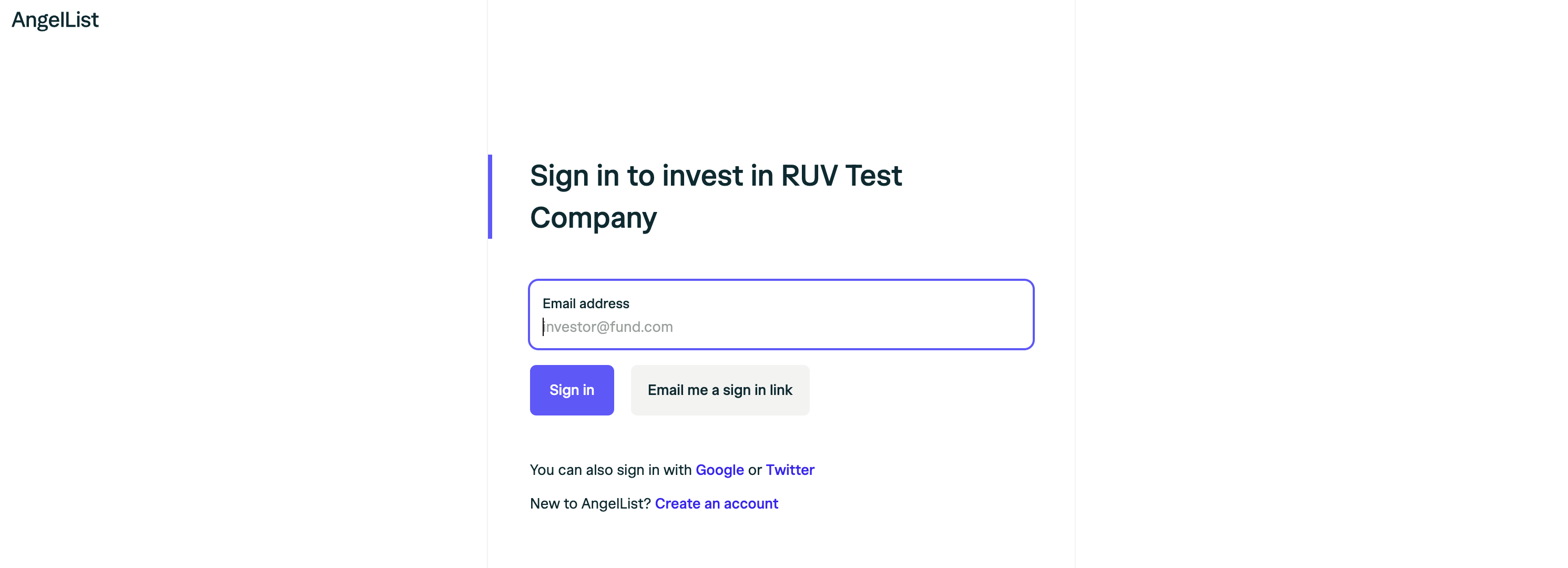
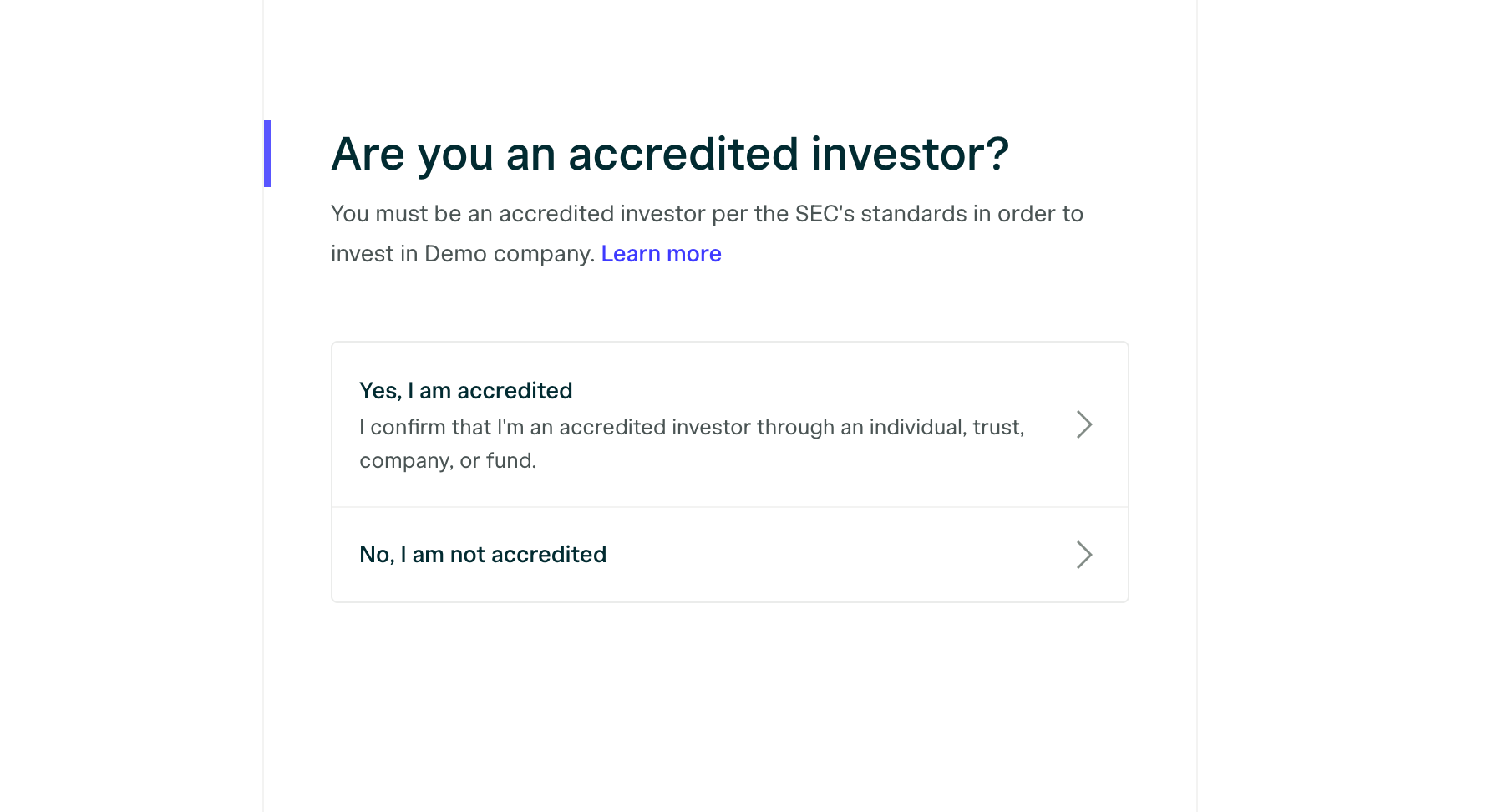
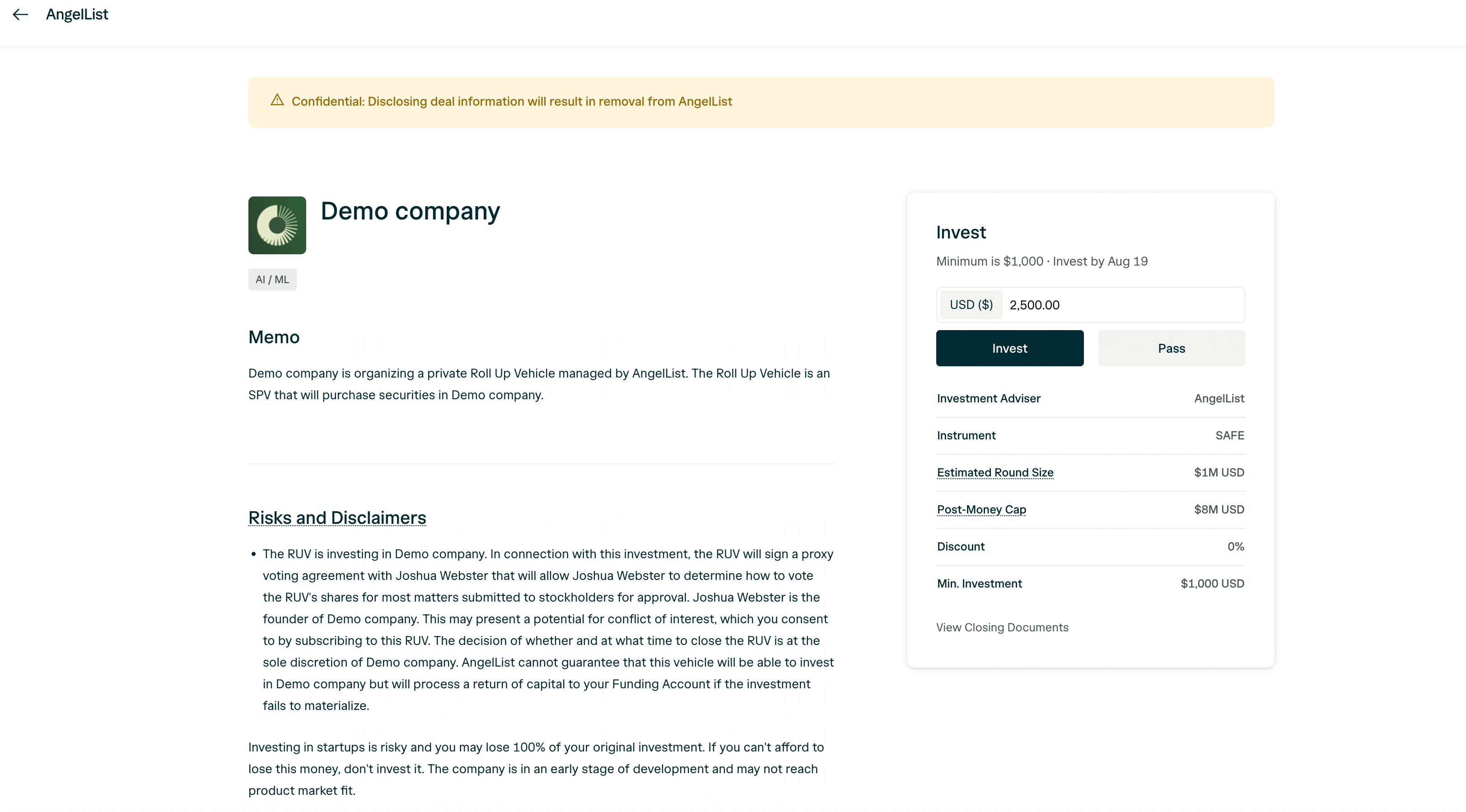

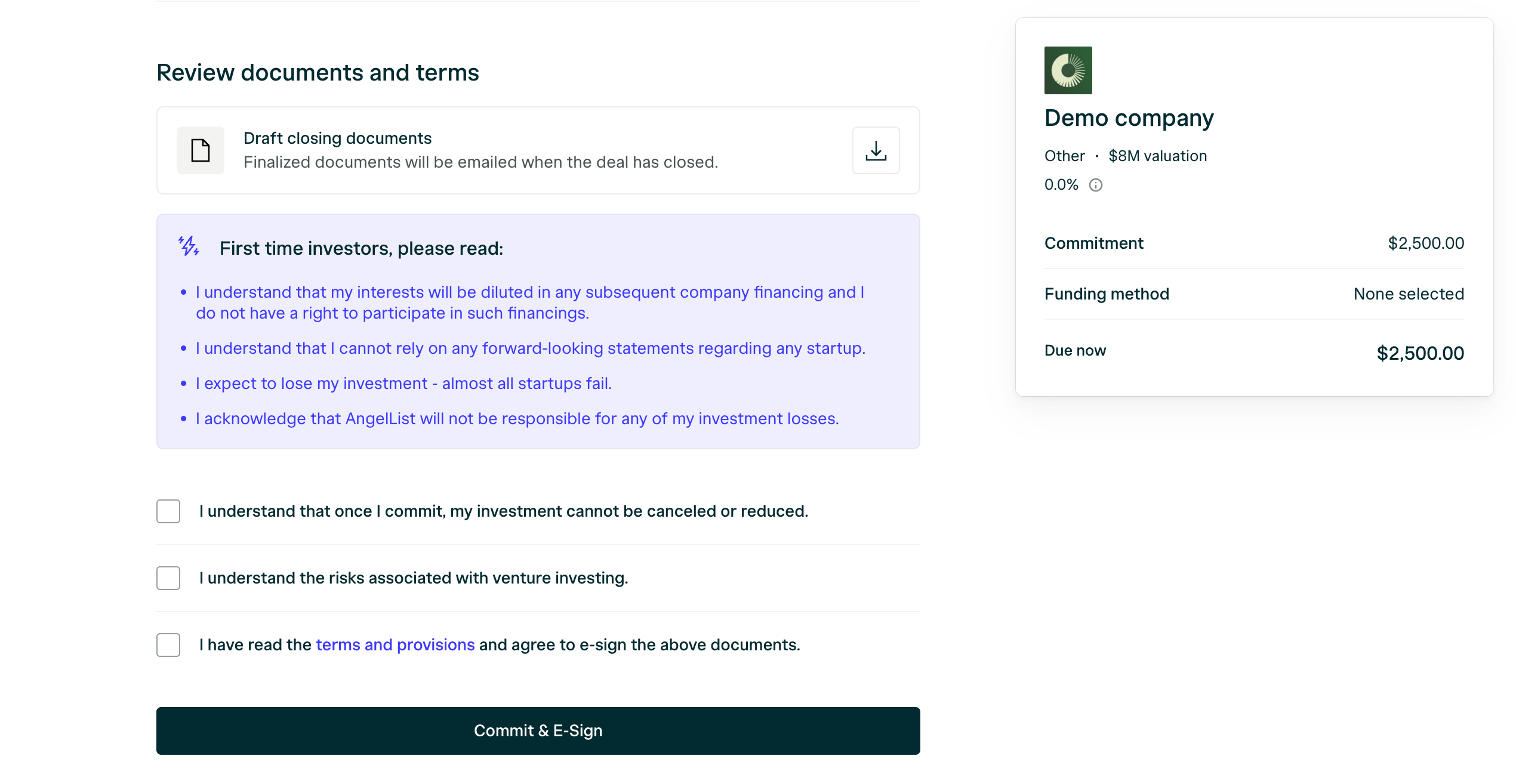

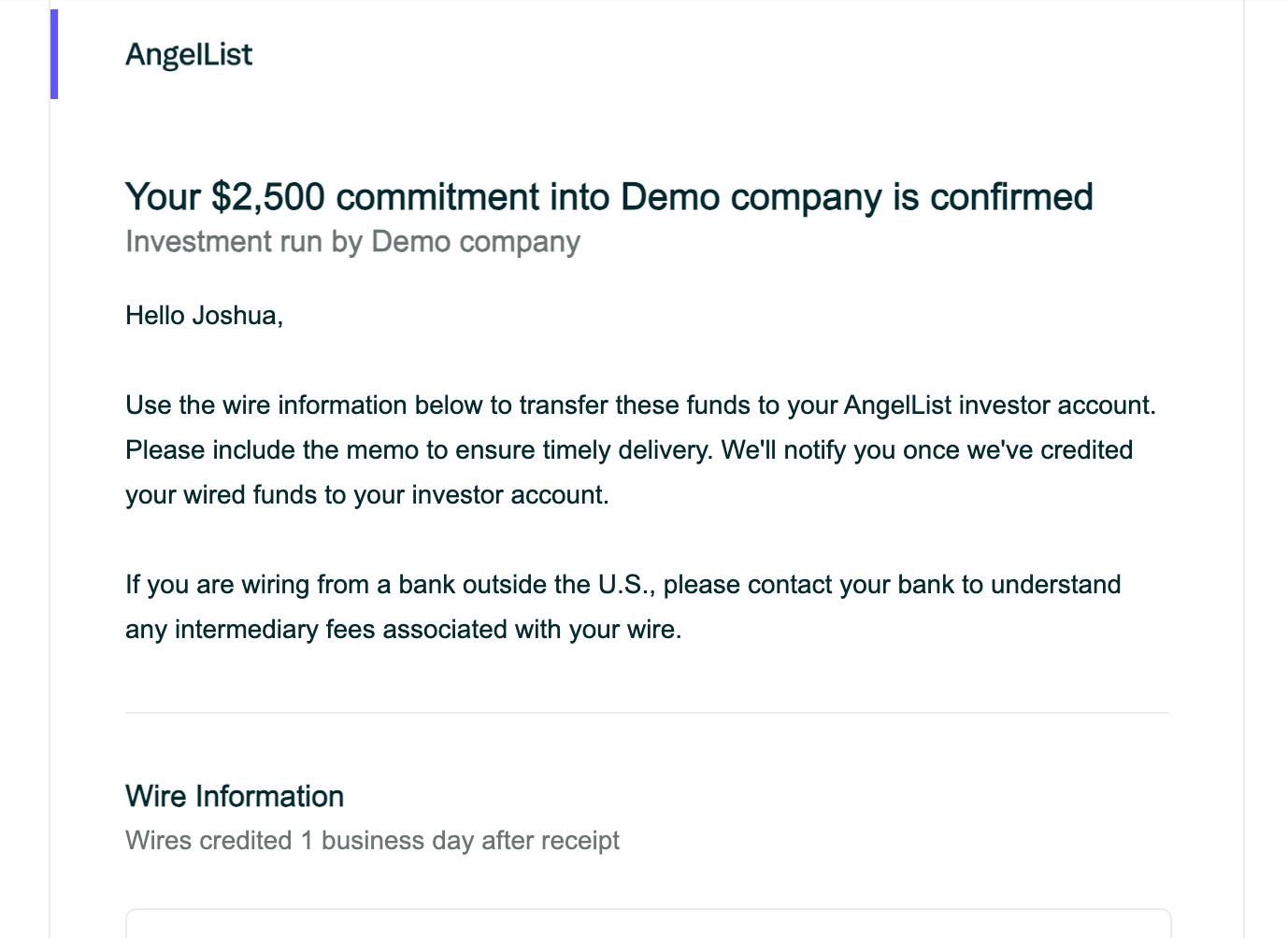
What types of entities can investors invest with?
Investors can invest as an individual; through a trust; through a company (LLC or corporation) or checkbook IRA; as a fund relying on Section 3(c)(1) or 3(c)(7); as a DAO; or through a self-directed IRA. They’ll select the appropriate entity during the investment flow. They’ll need to provide information about their investment entity for our KYC (‘know your client’) review.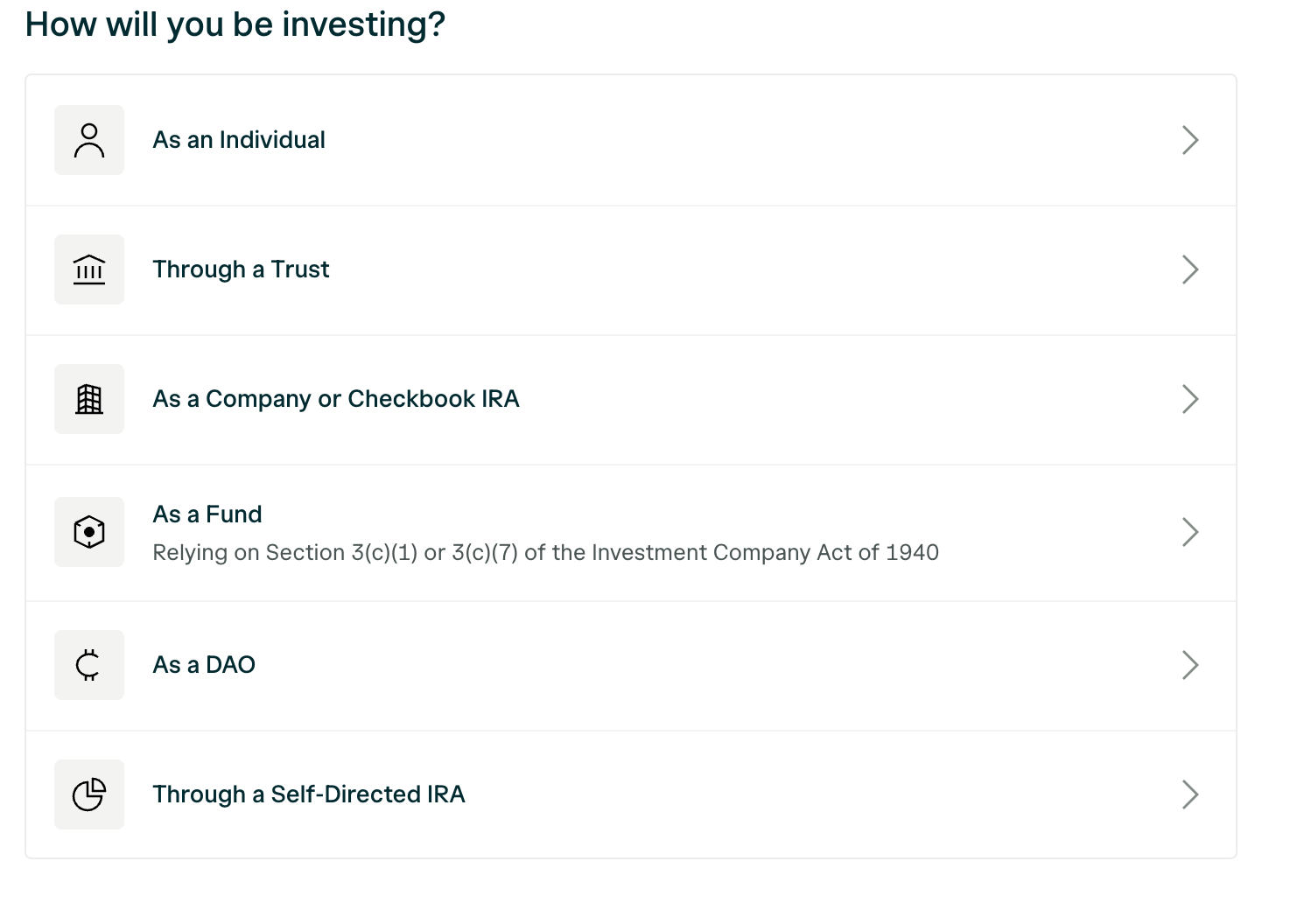
What investor tax information is needed?
They’ll select their U.S. tax status and provide the relevant information corresponding to their tax status. The details collected include their legal name, address, tax identification number (SSN/EIN or foreign TIN, as applicable), and any required treaty/withholding certifications.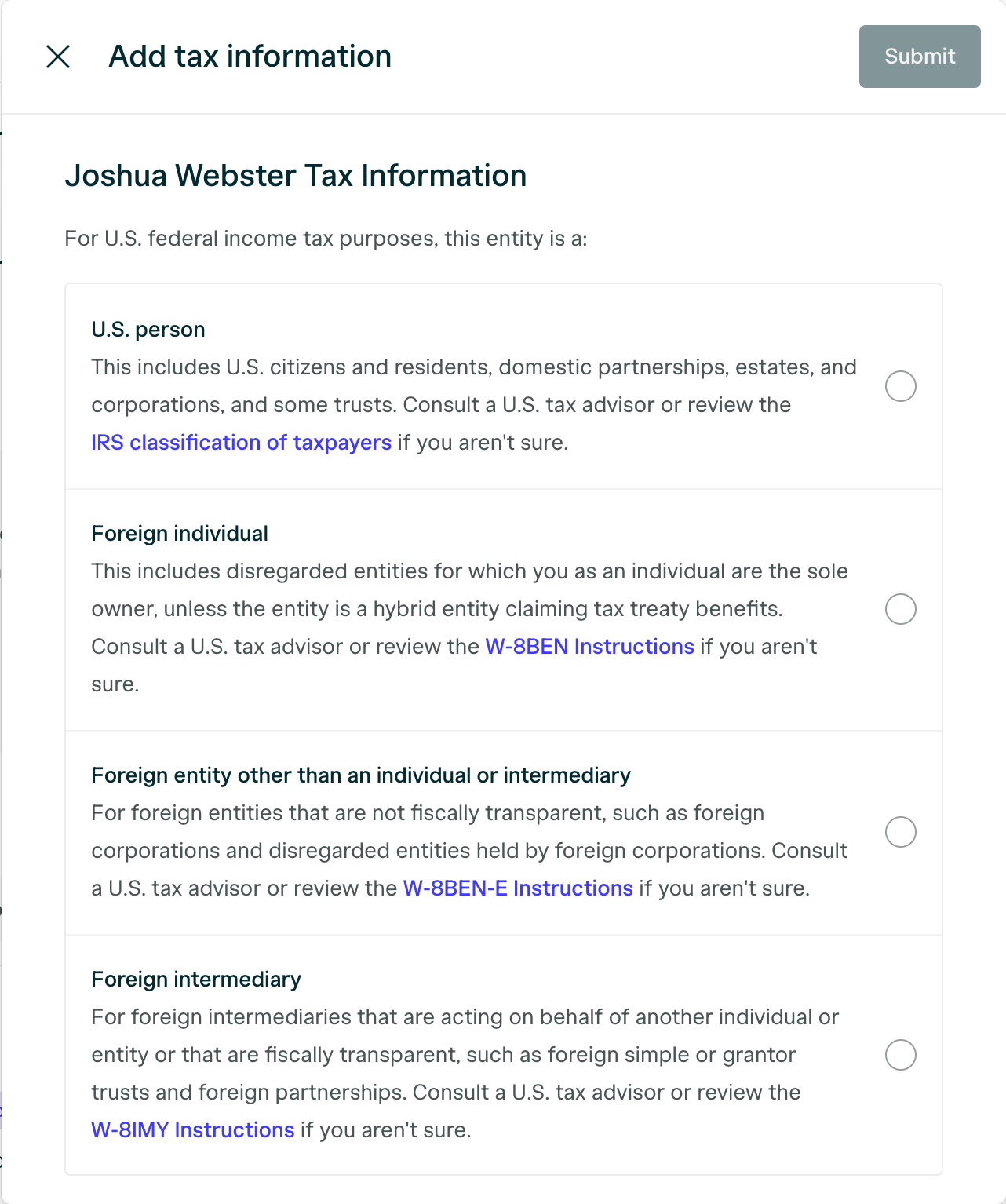
What do investors sign?
Investors in the RUV do not sign the actual investment docs (like a share purchase agreement or a SAFE), instead by investing through the RUV, they subscribe to the special purpose vehicle (RUV) which is the entity that will sign the actual investment docs with the company. Rollups will review the documents to ensure the terms match what you described to investors before signing the documents. If there is a divergence, we may need to message investors and provide them an opportunity to opt-out. Investors are e-signing (on AngelList) RUV documents that subscribe them to a special purpose vehicle (the RUV). The RUV documents consist of:- The (RUV) Partnership Agreement - This is where the parties establish respective rights and obligations to the fund, as well as the rules, processes, and procedures that shall govern the business and affairs of the fund.
- The (RUV) Subscription Agreement and Privacy Notice - This document outlines the mechanics that surround the flow of funds to the RUV.
- The Private Placement Memorandum (PPM) - The PPM describes the terms of the offering, details about the investment vehicle, and the risks of the investment, among other things.
How do investors sign the closing docs?
Investors e-sign the closing docs. If requested, we can facilitate an offline closing for an investor for an additional add-on fee.Can investors fund commitments with USDC?
Yes, select crypto as the funding method.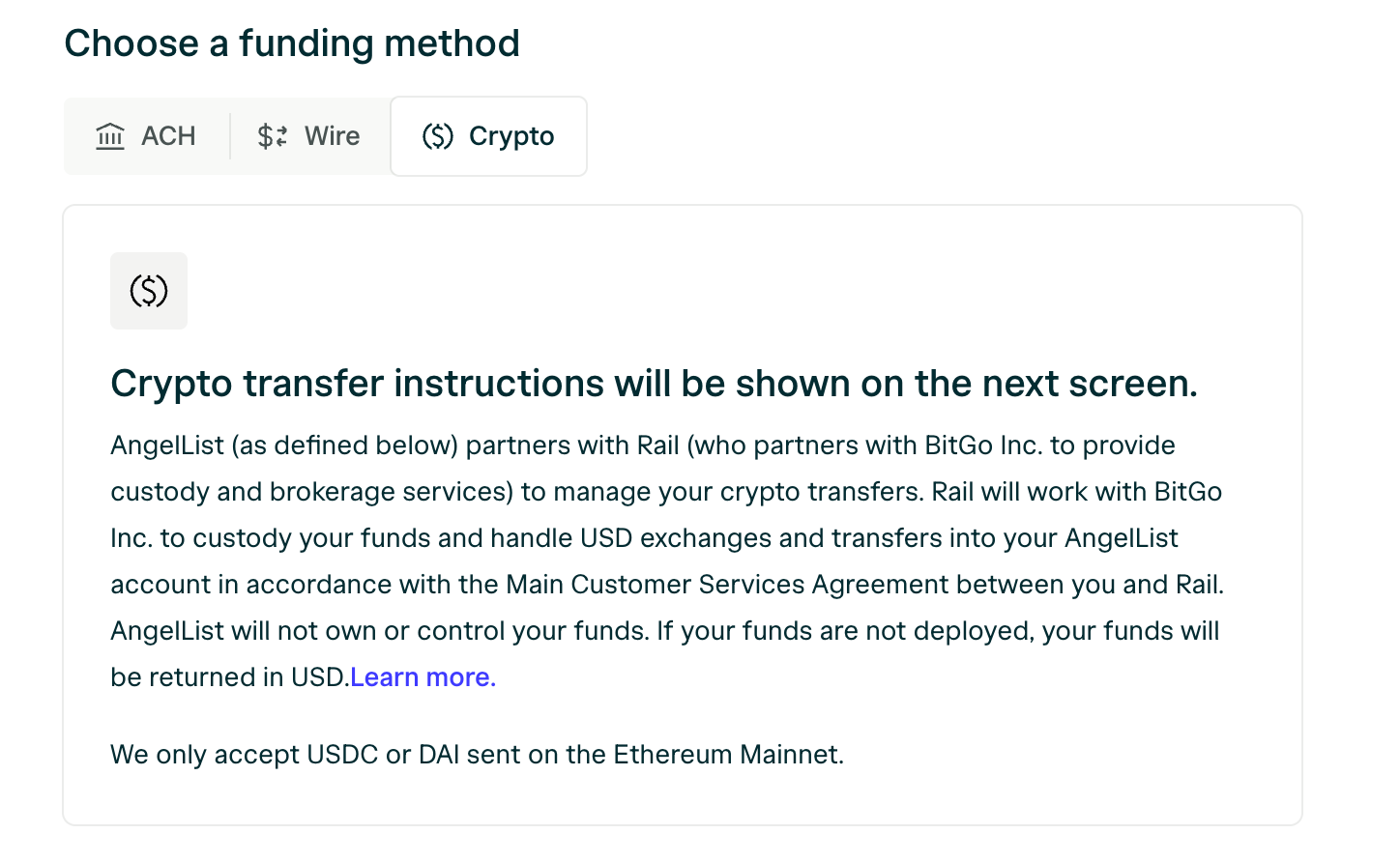
Once received, the USDC will be converted and you will receive the entirety of your raise in USD.
We only support investors funding their commitments with USDC from specific jurisdictions. If an investor sees a message that they are “unable to access crypto” at this time, it is because they are in an unsupported geography.
During Investment & Modifications
Can an investor increase their commitment?
To increase or cancel an investment before the RUV has been finalized, you can email us at team@rollups.com. Investors may email us at invest@angellist.com.Can investors see how much was raised in the RUV?
Investors will not see how much has been raised & committed to the RUV when it is raising, nor will they see who else invested.Post-Investment & Ongoing
Will investors get a copy of the financing docs?
No, we do not share the financing docs with investors. However, you can send them the docs via email if you would like.Investors will be able to track their ownership in the RUV from their Dashboard. You can read more about this here.
Do QSBS benefits flow through?
Generally, yes, the benefits of QSBS flow through when investing in a RUV. RUVs are Delaware Limited Partnerships which are passthrough entities.Will investors receive a K-1 every year?
In most cases, no. RUVs will generally only issue K-1s when there is taxable activity (such as distributions or interest). If applicable, K-1s will be posted to your AngelList dashboard and your email.When will investors receive their K-1s for the prior tax year?
AngelList provides prior tax year information sequentially as it becomes available:- By the end of February:AngelList will publish a summary of your investments and information about which investments will have a K-1.
- By the end of March:AngelList will publish a tax package that includes either a K-1 or an estimate for all investments requiring a K-1 for the prior tax year.
- After March:Tax packages that include one or more estimates, such as investments in passthrough portfolio companies, will be updated with final K-1’s as outstanding tax information is received and processed.
If you need a wire callback, please feel free to reach out to invest@angellist.com.
What are the tax consequences for international investors?
Capital gains are taxed in the recipient’s country of tax residence. Investors are investing in a US partnership and will receive a schedule K-1 for the initial year of investment and each subsequent year to the extent there is income or loss to report. Help Center Articles that may be useful:- What are the tax consequences for non-U.S. investors?
- I’m foreign. Do I need to file a US tax return?
- When will I receive my K-1 for the prior tax year?
- My tax package says I won’t receive a K-1 for the year, why not?
We always recommend that foreign investors have access to a US tax advisor, as we are not authorized to provide tax advice in the event they do not understand how they should report income earned on the platform.